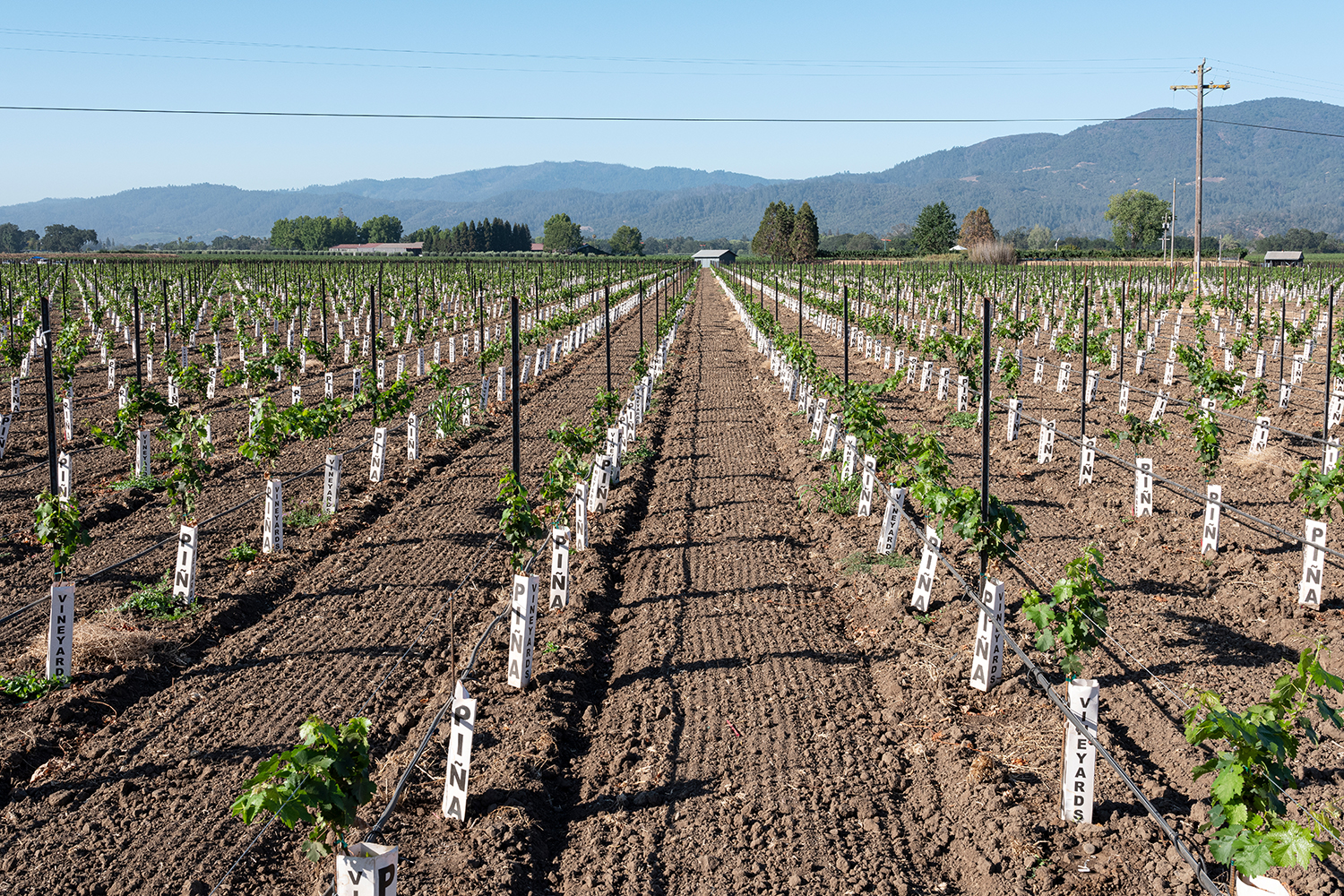Over three decades, Frank Family has strategically expanded our vineyard properties across Napa Valley. Our winery now owns and farms 380 acres of vines on four estate vineyards in Carneros, Rutherford, and Capell Valley to give our winemaking team exceptional quality and unparalleled depth when it comes to crafting our diverse collection of wines.
In 2012, Rich and Leslie Frank acquired our Benjamin Vineyard, an 87-acre property directly across from their original Winston Hill estate in Rutherford, to complete their portfolio. This property was formerly known as the Wood Ranch and was owned by the Wood Family for three generations. This coveted piece of land had been providing fruit for many high-profile neighboring wineries such as Quintessa and Caymus before the Franks purchased the land for its ideal location.

Well-positioned in the heart of Rutherford, the historic ranch was a mosaic of vineyard blocks planted to 80 percent Cabernet Sauvignon, Petit Verdot, Petite Sirah, Merlot, Cabernet Franc, and Zinfandel, with the remaining 20 percent planted to Chardonnay. Following the acquisition, we called upon a soil scientist to perform soil analyses of Benjamin Vineyard to assess its nutrient and mineral content. Soil-mapping revealed a patchwork of varying soil types in varying levels of health. It became evident that many vines were not receiving the critical nutrients needed to maintain their vigor, and as a result were underperforming.

The average lifespan of a grapevine is 20-25 years, and as the vines at Benjamin Vineyard approached that mark, together with our vineyard management team at Piña Vineyard Management, we made the arduous but necessary decision to replant and start anew. The process of replanting is laborious and time consuming, but we knew the benefits far outweighed the costs in the long-term quality of our vineyard, and ultimately of our wine.

Based on the 2012 soil study that was conducted, Winemaker Todd Graff and Davie Piña, owner of Piña Vineyard Management, implemented a ten-year plan to redevelop the Benjamin Vineyard from the ground up. This plan involved matching clonal selections with specific rootstocks, reorienting vine rows to aid ripening, and amending the soils through the use of cover crops to build back its health. Replanting also gave us the opportunity to replace some of the existing varieties that hadn’t thrived there in the past, like Chardonnay and Petite Sirah, with varieties better suited for the clay loam soils and warm daytime temperatures of the Rutherford valley floor.
“We wanted to plant smarter and use grapes that made better sense for our vineyard location,” said Graff, “being in Rutherford, we put a focus on Bordeaux varieties, planting predominately Cabernet Sauvignon with a little bit of Merlot and Petite Verdot.”

Since 2015, the vineyard blocks have been removed gradually and in phases to lessen the impact on wine production. The first half of the replant, which included blocks 10-17, are now in full production, which gave us the green light to replant the second half in spring 2021. In many cases, not only did we change what grape variety was planted, but we also changed how it was planted, reorienting the vine rows whenever possible.
“We changed the direction of the vine rows to follow the pattern of the sun, allowing the vines to receive uniform sun exposure all day. With the sun now directly above the vines all day, the canopy can also better protect it from overexposure in the afternoon,” said Graff

We eagerly await the ten-year replanting process to culminate this year after we install a new trellis system to our young vines. The next few years are crucial as the new vines begin to deepen their root system and grow their canopy. It’s not until 2024 that we expect them to yield enough fruit to harvest. While the replanting journey has been long, its rewards are tremendous, and we look forward to sharing the new fruit of our labors with you in the years to come!










 Our
Our




